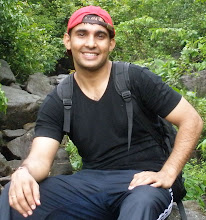The main culprit behind the recent increase in India’s CPI
inflation is rural India, while the urban CPI inflation has been largely under
control. To put things into perspective, consider these facts. Total CPI
inflation in November 2014 was 3.3% of which 1.8 percentage points (ppt) were
contributed by rural CPI and 1.5 ppt were contributed by urban CPI. From
November’s 3.3%, India’s CPI inflation surged to 5.4% in June 2015 led by 3.5
ppt contribution by rural CPI and 1.9 ppt by urban CPI. The contribution of
rural CPI inflation has nearly doubled from 1.8 ppt in November 2014 to 3.5 ppt
in June 2015 as compared to relatively lower contribution of urban CPI
inflation from 1.5 ppt in November 2014 to 1.9 ppt June 2015.
What is more paradoxical here is that rural inflation has nearly
doubled since November 2014 at a time when rural demand is going through the
worst down cycle in over a decade. Here are four factors that tell the story of
rural distress. One, nominal rural wage grew merely at 2.6% in May’15, the
slowest pace since June 2005. Moreover, real rural wages have actually witnessed
a contraction in nine of the last 10 months. Two, minimum support price (MSP)
of agriculture produce grew at 1.6% and 2.9%, respectively in fiscal 2015 and
fiscal 2016, the lowest in last 9 years. Three, foodgrain production of rabi
crop contracted by 7.2% in 2014-15 over 2013-2014 as unseasonal rains in March
2015 destroyed a significant chunk of standing rabi crop. Four, the rural
economy is reeling under negative wealth effect as the land prices in rural
areas have fallen by around 20% since the peak of 2013-14.
What is more baffling is that milk inflation in rural India, which
is the source of milk supply for the entire country, at 7.9% is 200 bps higher
than milk inflation in urban India. Even inflation for cereals in rural India at
2.8% in June 2015 is 240 bps higher than in urban India. A simple logic suggests
that pace of price increase should be lower in rural India than in urban India
as the latter completely depends on the former for the supply of these items.
Similarly, rural inflation for recreation and amusement category,
which includes cost of movie ticket, hotel lodging charges, monthly charges for
TV cable charges etc, has gone up from 4.2% in November 2014 to 5.8% in June
2015 while urban inflation for the same category eased from 5.1% to 4% during
the same period.
Is data collection a
problem? Price data in rural and
urban India is collected by two separate bodies. National Sample Survey Office
(NSSO) collects price data for urban CPI and Postal Office is responsible for
collecting price data for Rural CPI. While data collection is the core function
of the former, it is an additional responsibility on the latter. NSSO has
employed thousands of qualified field officers from statistics/economics
background for the data collection work. On the other hand, price data in rural
India is collected by postmen, who obviously are not the best qualified persons
for the job and it is plausible to have a doubt on the quality of price data
collected by them. Highlighting this issue, a Reuters article had quoted a
postman, “Sometimes during the rainy season, I am unable to go out. Then I have
no option but to fill in the prices of different items myself, ...usually I go
to shops once or twice in two or three months to check price trends and fill in
the price details myself by cross-checking with my wife”. The more worrisome
part is that these numbers are key ingredients for monetary policy
decision-making by the RBI, risking a case of garbage in garbage out.
There is no reason for such a sharp spike in rural inflation to
sustain given that rural demand has slipped to a decadal low. Hence, lower
rural demand would pull the rural inflation down in coming months.
Outlook on monetary
policy: While
RBI kept the policy rate on hold on 4 August 15, it is looking for more clarity
on impact of monsoon on inflation trajectory and timing of the Fed “lift-off”
before easing the repo rate further. Interestingly, RBI has lowered January 2016
inflation projections by 20bp to 6.1%. CPI inflation, however, is likely to be
at 5.4% by January 2016 due to likely fall in rural inflation and lower crude
oil prices – both are not factored into RBI’s inflation model – providing a
70bp downside to RBI’s inflation projections. Therefore, RBI may prepone
another rate cut of 25bp on 29-Sep’15, given uncertainty over many key issues –
sequential increase in food prices over the past two months, monsoon in Aug-Sep
and fed rate action etc – will be over by then. Moreover, favourable change in
some of the key liquidity enhancing factors – improving CAD, change in
household savings from physical to financial assets, strong deposit
mobilization and low credit off-take – may push liquidity into surplus, leading
to reverse repo becoming the operative rate. It could be an effective 100 bps
cut in interest rates. Therefore, we may not be close to the end of the easing
cycle yet and there is more downside left to the interest rates in India.







No comments:
Post a Comment